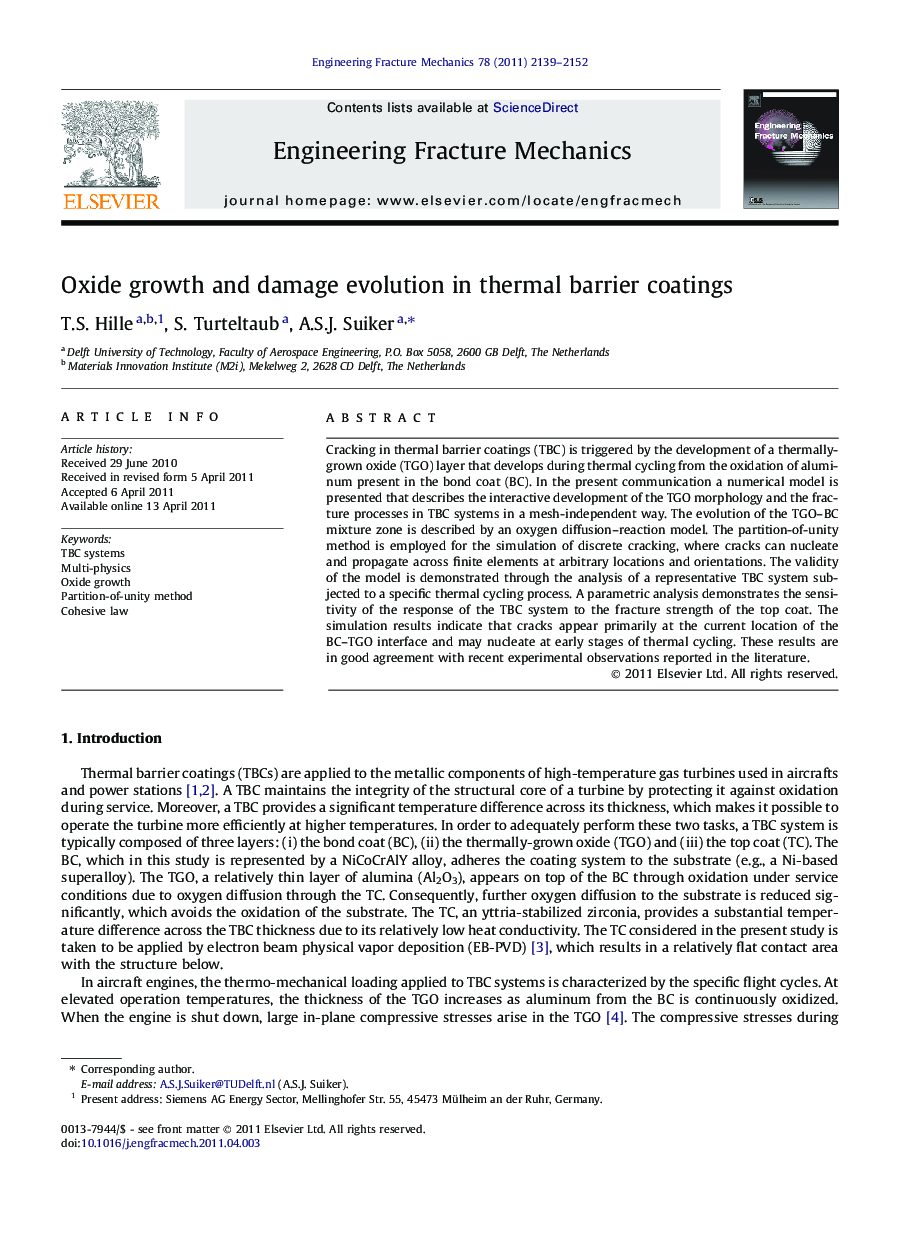| Article ID | Journal | Published Year | Pages | File Type |
|---|---|---|---|---|
| 767679 | Engineering Fracture Mechanics | 2011 | 14 Pages |
Cracking in thermal barrier coatings (TBC) is triggered by the development of a thermally-grown oxide (TGO) layer that develops during thermal cycling from the oxidation of aluminum present in the bond coat (BC). In the present communication a numerical model is presented that describes the interactive development of the TGO morphology and the fracture processes in TBC systems in a mesh-independent way. The evolution of the TGO–BC mixture zone is described by an oxygen diffusion–reaction model. The partition-of-unity method is employed for the simulation of discrete cracking, where cracks can nucleate and propagate across finite elements at arbitrary locations and orientations. The validity of the model is demonstrated through the analysis of a representative TBC system subjected to a specific thermal cycling process. A parametric analysis demonstrates the sensitivity of the response of the TBC system to the fracture strength of the top coat. The simulation results indicate that cracks appear primarily at the current location of the BC–TGO interface and may nucleate at early stages of thermal cycling. These results are in good agreement with recent experimental observations reported in the literature.
► Cracks in TBCs nucleate primarily at the current interface between the bond coat and the thermally-grown oxide layer. ► Crack nucleation is triggered by interfacial irregularities of the thermally-grown oxide layer. ► The fracture strength of the top coat is a critical parameter for designing against catastrophic failure of the TBC.
